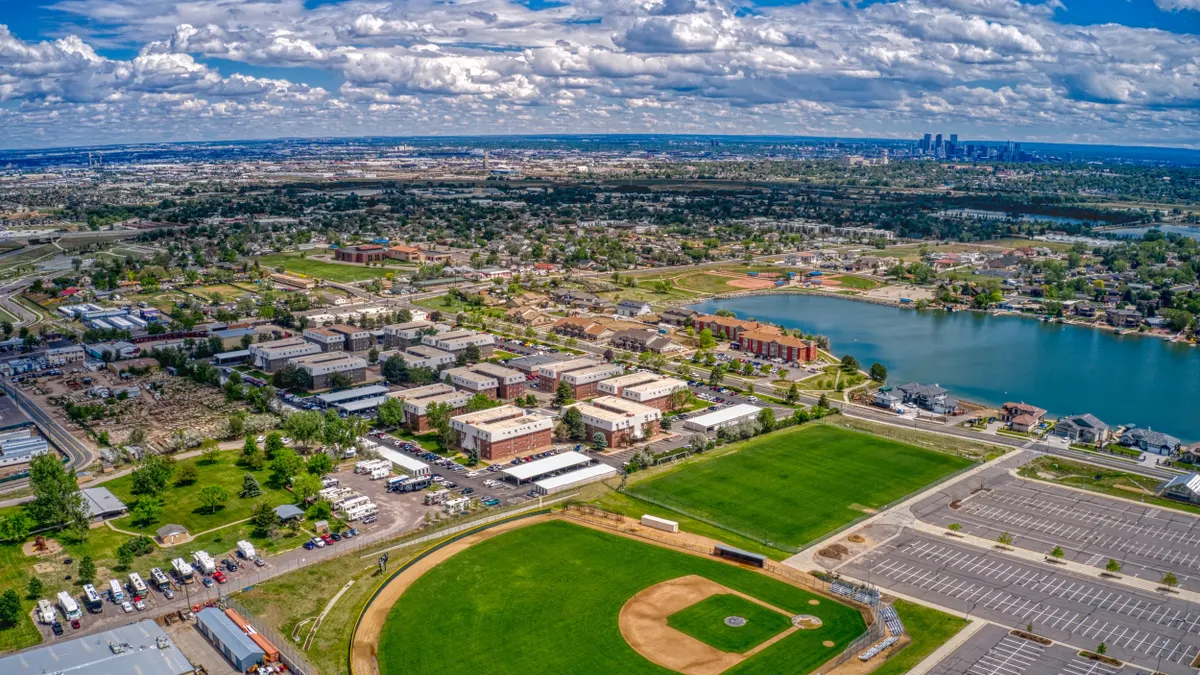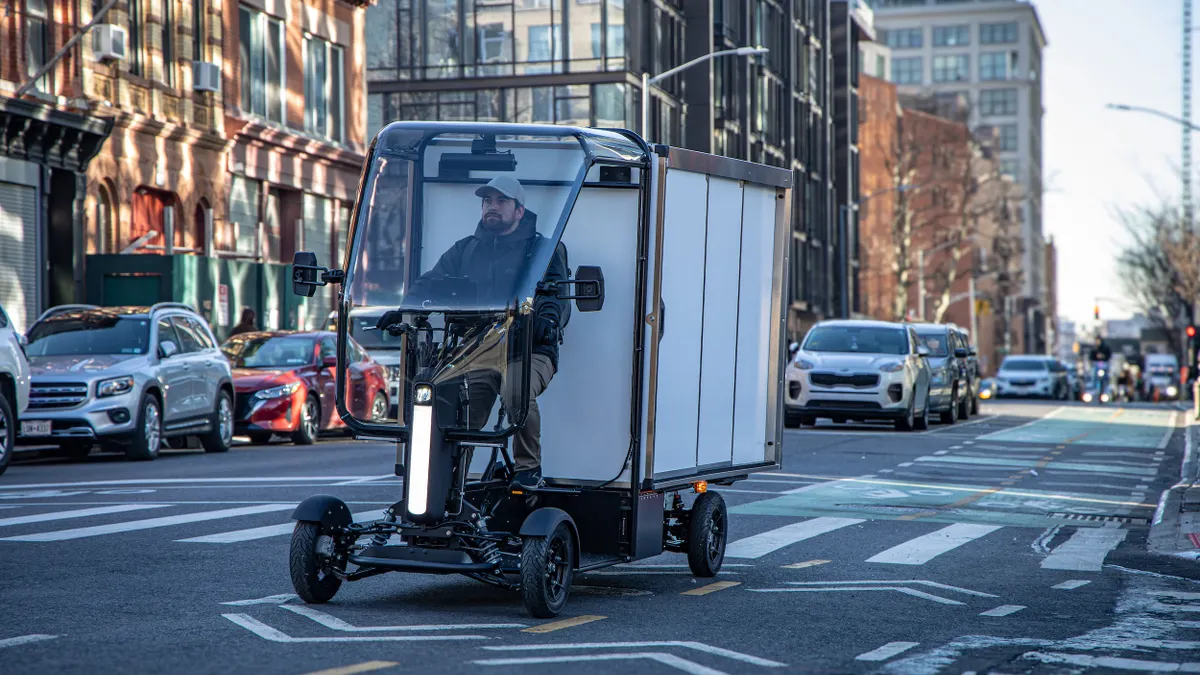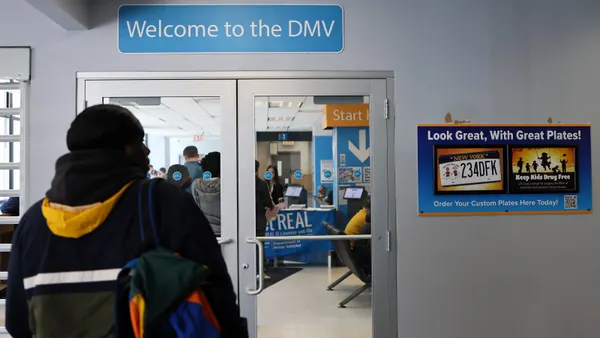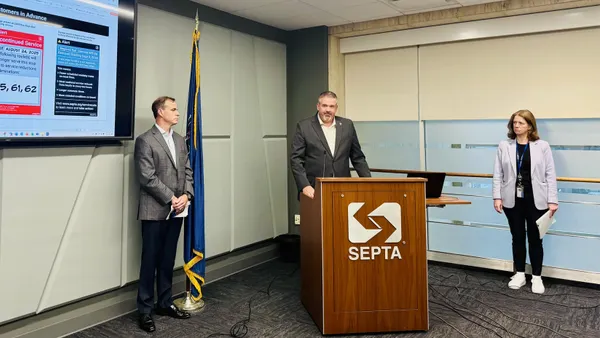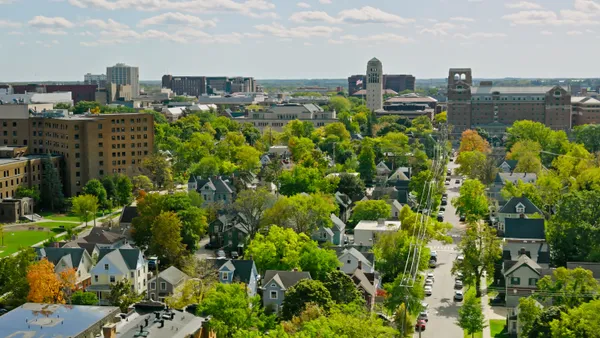Editor's note: This article was originally published in American City & County, which has merged with Smart Cities Dive to bring you expanded coverage of city innovation and local government. For the latest in smart city news, explore Smart Cities Dive or sign up for our newsletter.
Mayors of multiple large cities in California are speaking out about the zeroing out of Homeless Housing, Assistance and Prevention (HHAP) program funding in the state’s proposed 2025-2026 budget, calling the lack of continued funds an “urgent threat” for their communities.
“This cannot come at a worse time,” Riverside, California, Mayor Patricia Lock Dawson said at a June 5 press conference regarding the proposed HHAP budget cuts. Local governments are already facing a decline in federal support, Lock Dawson said, noting the pending 44% cut to affordable housing funding from the U.S. Department of Housing and Urban Development. The coalition of mayors called upon the state legislature to reinstate full HHAP funding at $1 billion.
California established the HHAP grant program in 2019 to help cities and counties combat the growing homelessness crisis. The elimination of what would be a seventh round of HHAP funding for California cities and counties comes as the state faces a $12 billion budget shortfall, as well as escalating tension between Gov. Gavin Newsom and local governments regarding homeless encampments.
Newsom, who has urged local governments to implement model regulations he proposed for outlawing homeless encampments, blamed cities and counties for not doing more to address homelessness in their jurisdictions.
“I'm not interested in funding failure anymore,” Newsom said at a May press conference when asked about the lack of HHAP funding in the budget proposal.
Mayors pushed back on that narrative during the June 5 press conference, saying they are already using and rely on the funding to provide thousands of shelter beds, and cutting such aid could lead to detrimental results.
San Francisco Mayor Daniel Lurie said during the press conference that without the state HHAP funding, his city stood to lose 1,000 shelter beds.
“We need more beds, not fewer,” Lurie said. “We don’t want to slide back. We want to get people off the streets and inside.”
Los Angeles Mayor Karen Bass pointed to a 10% reduction in homelessness in L.A. in 2023 as a sign that the funding was having a positive impact. It was the first time in six years that L.A. recorded a decline in its homeless population. Bass said she expects to see another decline when the 2024 data is published.
“While we are on a great trajectory, now is the time we need the money the most,” Bass said. “You don’t cut off money when things are getting better and the numbers are declining.”
San Diego recorded a nearly 14% drop in homelessness year over year in January, according to Mayor Todd Gloria. Eliminating the HHAP funding would be a “gut punch” to the city and lead to the loss of 426 shelter beds, including 52 youth beds, and a large portion of the city’s outreach network, Gloria said.
“Our homeless shelters are almost always full,” Gloria added. “This would have an impact.”
Irvine Mayor Larry Agran said now is the time to begin scaling city programs and projects and putting them into place. By this fall, Agran said, Irvine expects to have eliminated homelessness among the city’s school children, thanks to HHAP funding.
“We are adapting models that are working; we’re making progress,” Agran said. “To fall back now would be just tragic and really unconscionable.”
California, often considered the epicenter of the nation’s homelessness crisis, currently has 24% of the country’s unhoused population. The state recorded a 3.1% increase in homelessness in 2024, a slower increase compared with the year prior and well below the country’s 18.1% record-high increase in homelessness.




